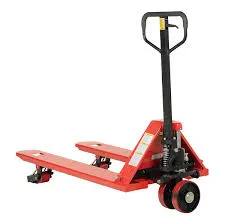


Understanding the Types of Fall Protection Ensuring Safety in Workplaces
Fall protection is a crucial aspect of workplace safety, particularly in industries such as construction, maintenance, and warehousing, where employees frequently work at elevated heights. Falls can lead to severe injuries and fatalities, making it essential for employers to implement robust fall protection measures. This article will explore various types of fall protection and their importance in maintaining a safe working environment.
1. Guardrails
Guardrails are one of the most common forms of fall protection in elevated work areas. These physical barriers are installed at the edges of walkways, roofs, and scaffolds to prevent workers from accidentally falling off. Guardrails typically consist of a top rail, mid rail, and toe board, ensuring that they effectively shield workers from falls. The installation of guardrails is often a regulatory requirement, making them a fundamental safety feature.
2. Personal Fall Arrest Systems (PFAS)
Personal fall arrest systems (PFAS) are designed to stop a fall in progress. These systems typically consist of three main components an anchorage point, a full-body harness, and a lanyard or decelerator. When a worker falls, the PFAS arrests the fall before the individual reaches the ground, minimizing the risk of injury. PFAS are especially crucial for workers in construction, maintenance, and other industries requiring elevated work. Proper training on how to use these systems is vital to ensure their effectiveness.
3. Safety Nets
Safety nets are another vital form of fall protection often used in construction and scaffolding applications. These nets are installed below the work area to catch falling workers or tools, preventing them from hitting the ground. Safety nets can absorb the energy of a fall, significantly reducing the likelihood of serious injuries. They should be inspected regularly to ensure they are free from tears and damage, maintaining their capacity to protect workers effectively.
4. Harness Systems

While personal fall arrest systems include full-body harnesses, it is important to highlight that various harness systems cater to different applications. For instance, some harnesses are designed specifically for rescue operations, while others may be suited for climbing or working on towers. Understanding the differences allows employers and workers to select the appropriate harnesses based on the tasks they are performing, ensuring optimal safety during diverse operations.
5. Positioning Systems
Positioning systems allow workers to work hands-free while being secured at heights. These systems typically involve the use of a harness and a positioning lanyard that attaches to an anchorage point. This setup enables workers to maintain their position without the risk of falling. Positioning systems are particularly useful in industries like telecommunications or construction, where personnel must often perform tasks while at height.
6. Warning Systems
Warning systems, including safety indicators like alarms and visual markers, help alert workers about potential fall hazards. These systems serve as proactive measures, warning workers of unsafe conditions which may lead to falls. They can be combined with other fall protection measures to create a comprehensive safety strategy.
7. Training and Education
While implementing fall protection measures is crucial, training and education for workers on the safe use of fall protection systems cannot be overstated. Regular training sessions should be conducted to familiarize employees with fall hazards, as well as the correct use of personal protective equipment (PPE). A well-informed workforce is better equipped to recognize potential fall risks and take appropriate measures to safeguard their safety.
Conclusion
Falls remain a leading cause of workplace injuries and fatalities, but with the right fall protection measures in place, these risks can be significantly mitigated. Guardrails, personal fall arrest systems, safety nets, harness systems, positioning systems, warning systems, and comprehensive training programs are all vital components of an effective fall protection strategy. Employers must prioritize safety to ensure that workers can perform their tasks without the fear of falling. By investing in fall protection measures and fostering a culture of safety, organizations can not only protect their workforce but also enhance productivity and morale.



